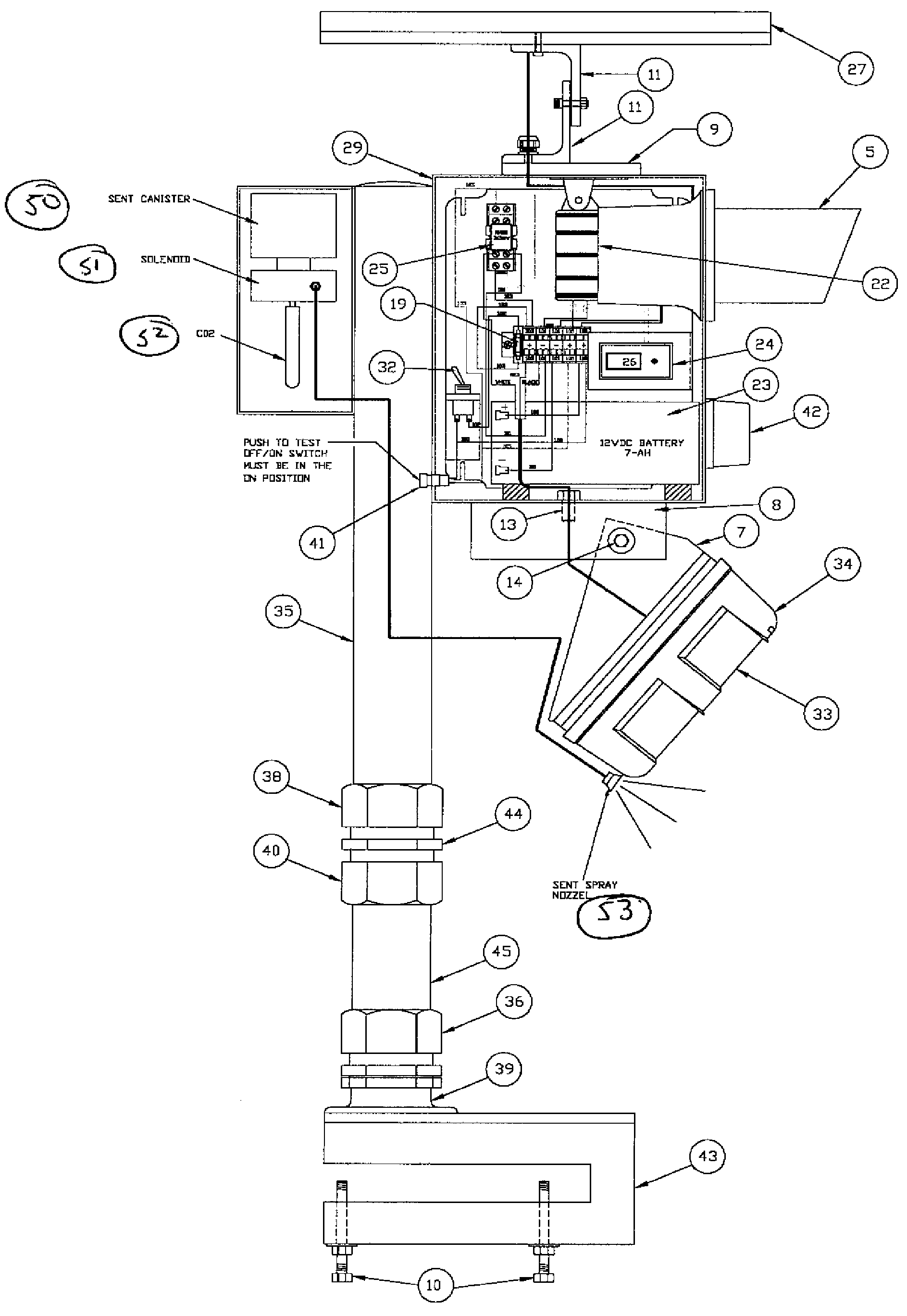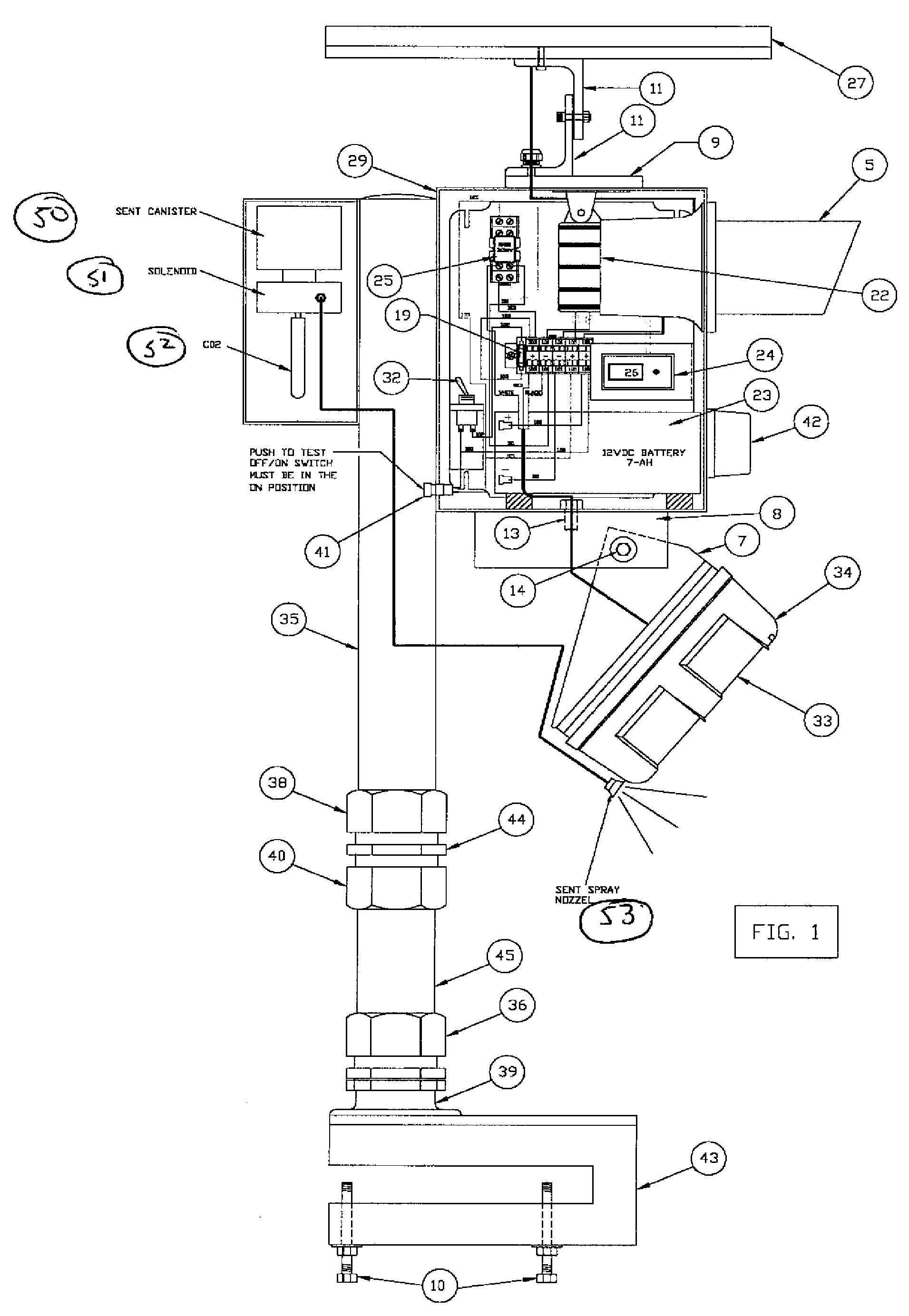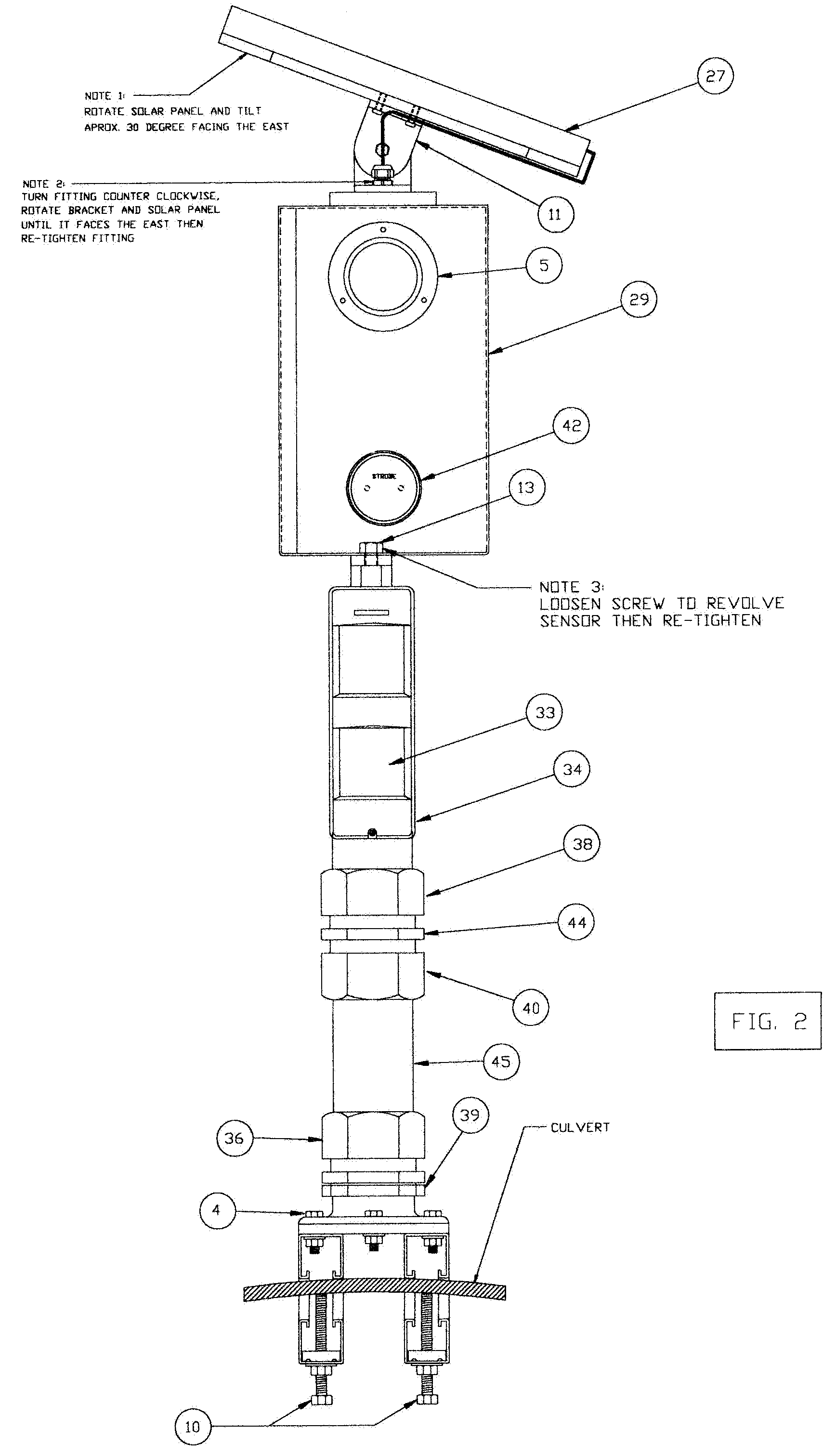Animal deterrent apparatus for mounting to a culvert
a technology for deterrent apparatus and culvert, which is applied in the direction of telegraph apparatus, taming and training devices, instruments, etc., can solve the problems of affecting human life, submerging additional land and trees, and affecting the safety of people, etc., and achieves the effect of convenient removal, easy mounting and subsequently removal, and easy manipulation
- Summary
- Abstract
- Description
- Claims
- Application Information
AI Technical Summary
Benefits of technology
Problems solved by technology
Method used
Image
Examples
Embodiment Construction
[0026]The animal deterrent apparatus of the present invention employs several integrated components. FIG. 1 is a schematic illustrating a preferred embodiment of the present invention, an embodiment whose major components include: an audio siren 22 and a strobe light 42 (together with the scent emitting parts mentioned below, referred to as “alarms”), a relay 25 and a battery 23—each of the aforementioned components disposed within a weatherproof control housing 29; a sensor 33 disposed within a weatherproof sensor housing 34; a scent reservoir 50, solenoid 51, and spray nozzle 53; a solar panel 27; and culvert mounting means comprising, primarily, a first mounting member 35, a second mounting member 45, a clamping device 43 and a clamp connecting assembly.
[0027]The control housing 29 is affixed to the first mounting member 35 at or near the proximal end of the mounting member 35. Preferably, the mounting members are metal tubes, as depicted in FIG. 1. However, mounting members, alt...
PUM
 Login to View More
Login to View More Abstract
Description
Claims
Application Information
 Login to View More
Login to View More - R&D
- Intellectual Property
- Life Sciences
- Materials
- Tech Scout
- Unparalleled Data Quality
- Higher Quality Content
- 60% Fewer Hallucinations
Browse by: Latest US Patents, China's latest patents, Technical Efficacy Thesaurus, Application Domain, Technology Topic, Popular Technical Reports.
© 2025 PatSnap. All rights reserved.Legal|Privacy policy|Modern Slavery Act Transparency Statement|Sitemap|About US| Contact US: help@patsnap.com



